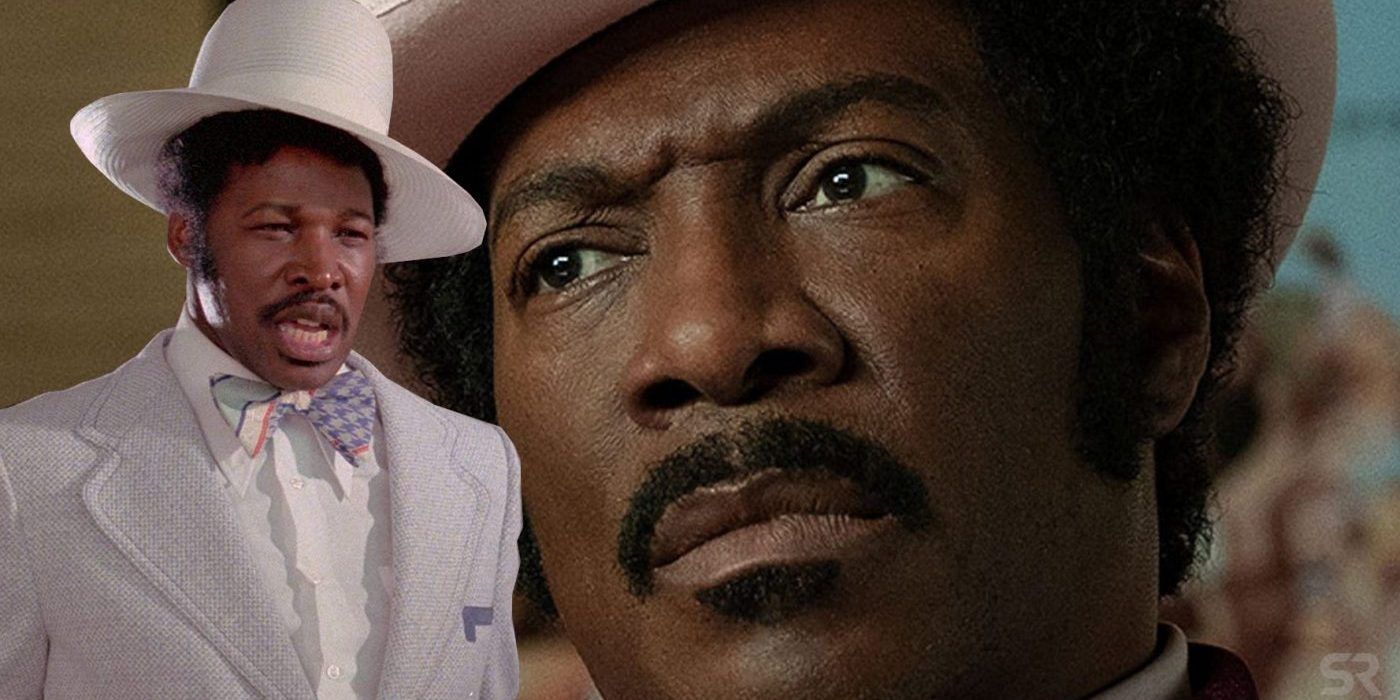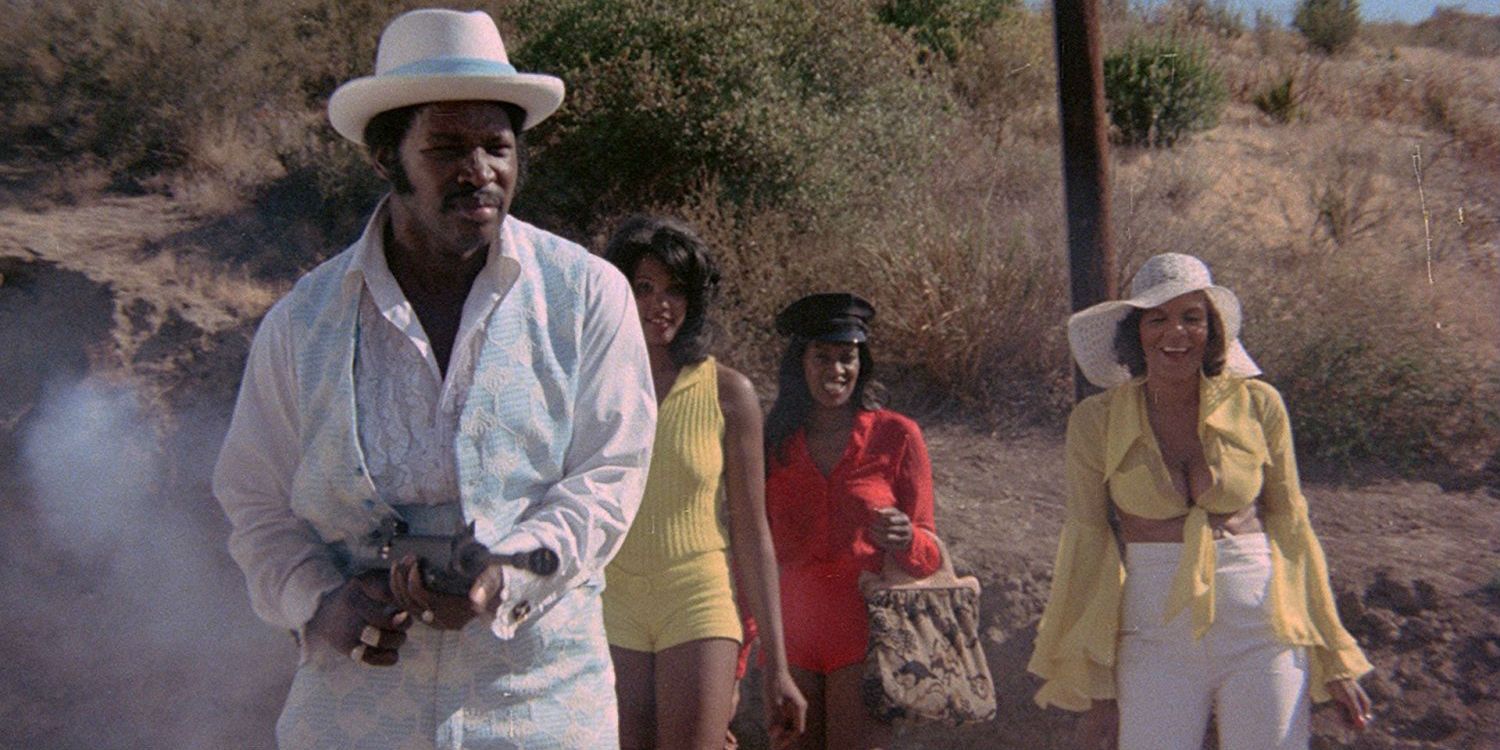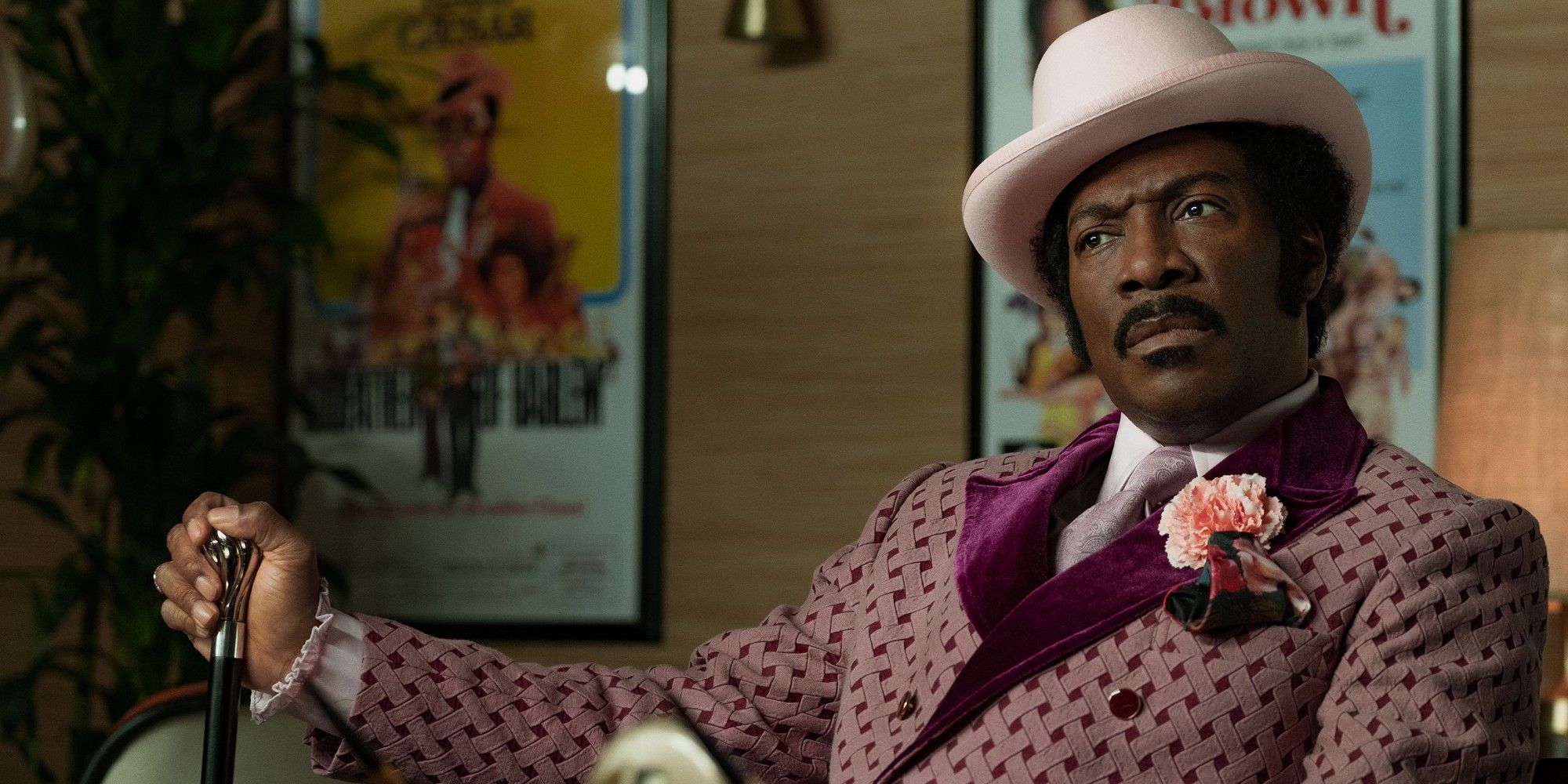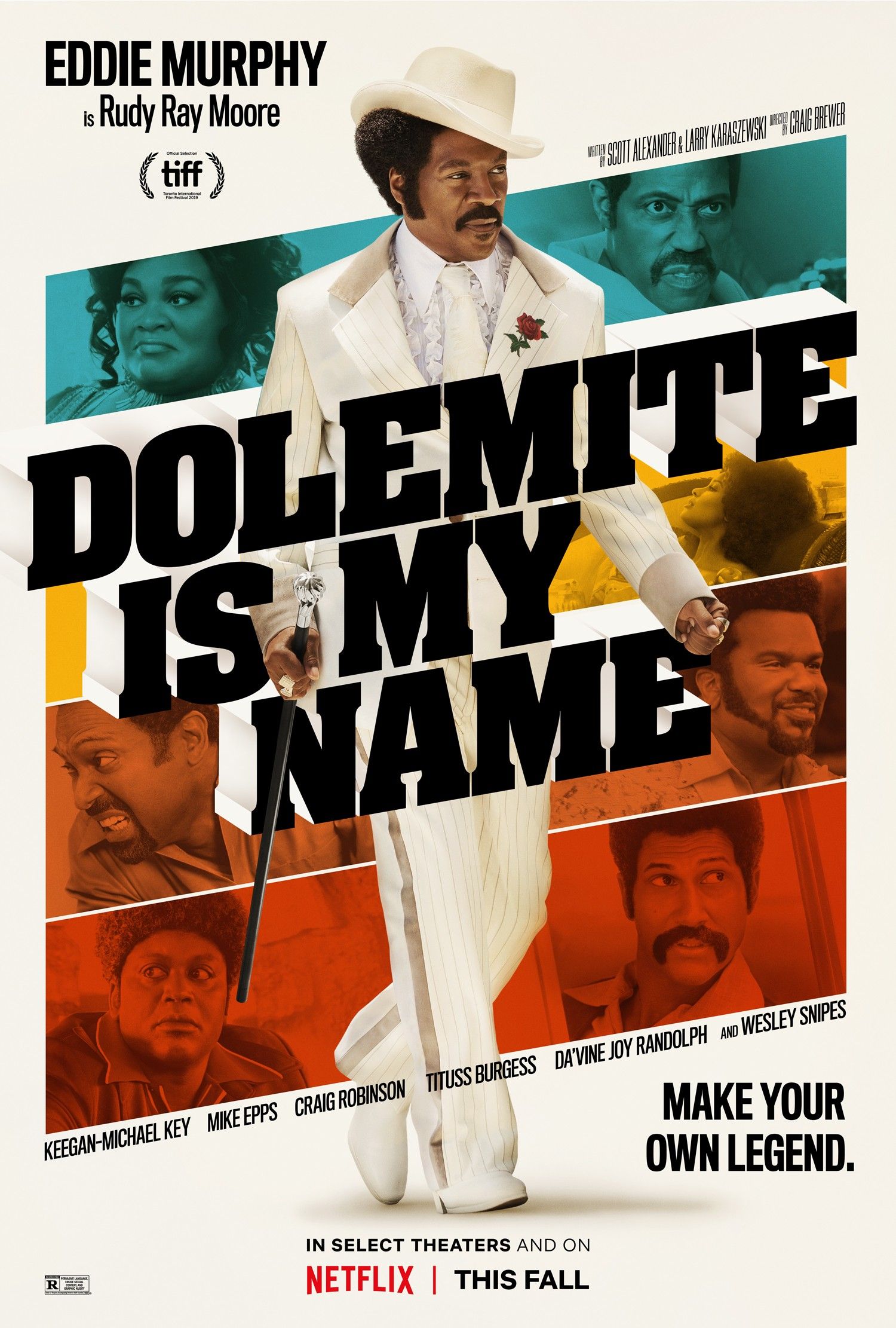Director Craig Brewer's Dolemite Is My Name tells the true story of comedian Rudy Ray Moore and the production of his 1975 cult classic, Dolemite – but the Netflix film does take some artistic license with the original film's true history. Dolemite was a long-time passion project for comic legend Eddie Murphy, who stars as the late Moore, leading an award-worthy and spectacularly-dressed cast that includes Wesley Snipes, Keegan-Michael Key, Craig Robinson, Mike Epps, Tituss Burgess and Da'Vine Joy Randolph. Together, the cast dramatizes the passion, perseverance and dedication that went into Moore's production of his iconic blaxploitation film.
Dolemite Is My Name is also a centrifuge for Black creativity and artistic determination. Like James Franco's The Disaster Artist, which is based on Tommy Wiseau and his wonky passion project, The Room, Brewer's film is more concerned with the actual journey than the final product. Murphy and Moore were friends for years, and Dolemite, which was co-written by Ed Wood collaborators Scott Alexander and Larry Karazewski, reflects this friendship by shedding light on Moore's revolutionary and explicit career.
Dolemite Is My Name depicts the difficulty Moore faced in producing Dolemite, which, despite its low production value, critical crucifixion, and nonsensical inclusion of kung-fu elements, was an overall success. Dolemite developed a cult following, earning $12 million at the box office during its initial theatrical run ($58 million by today's standards) and spawning three sequels: The Human Tornado (1976), Shaolin Dolemite (1999), and The Dolemite Explosion (2002).
How Rudy Ray Moore Made Dolemite
As the film portrays, Rudy Ray Moore financed Dolemite himself. The movie's production followed the success of Moore's standup albums, and its funding required nearly all of Moore's profits from his comedy efforts. But things weren't always going great for the comedian. As seen at the very beginning of Dolemite Is My Name, Moore tried breaking into the entertainment industry as an R&B singer, performing in clubs and recording a couple of songs in the 1950s and early '60s. From there, he branched out into producing some of his own comedy records – though these were equally as forgettable.
It wasn't until Rudy came into contact with the crude rhymes of his local wino that his career skyrocketed. In Dolemite Is My Name, Murphy depicted Moore seeking out an obnoxiously drunk regular at his record store; this is based on history. The real-life Moore found and revamped his entire routine off of a homeless man's ramblings. He "pimped" his image, personifying the character of Dolemite, a fast-talking, womanizing blaxploitation anti-hero. Dolemite would officially be introduced to the public on Moore's 1970 album Eat Out More Often, and would appear again on his subsequent albums This Pu**y Belongs To Me and The Dirty Dozens.
While Murphy's portrayal of Moore has its fair share of swears and lewd humor – at one point early in the movie, he belts out, "I fu*ked an elephant down to a coon!" – the portrayal is tamer than the work the real comedian put out; however, the film does show how Moore's work was censored due to obscenity. In fact, the content and art on his albums were so obscene (the cover of Eat Out More Often is actually re-created in the film) that they were put on the shelves concealed in brown wrapping paper. As a result of censorship, Moore never had the opportunity to broadcast his act like some of the other up-and-coming comics of his time, like Richard Pryor or Redd Foxx, nor did he ever really establish a working relationship with a studio. As we see in the film, he instead had to record his albums at his own home, in addition to self-promoting the majority of his catalogue. To his credit, however, several of the Dolemite albums did make it onto the Billboard charts, thanks in large part to the cult following Moore was starting to develop.
This sort of guerrilla production technique was similarly used to get the film Dolemite up on the big screen. With a $100,000 budget, Moore actually recruited a crew of UCLA film students and managed to land Rosemary's Baby supporting actor D'Urville Martin (played by Wesley Snipes) to co-star and direct. Dolemite Is My Name also features several other important figures in Moore's life: including his co-star and friend Lady Reed (played in the film by Da'Vine Joy Randolph), who was herself a black comedy legend, and musician Ben Taylor (Craig Robinson), who created the iconic Dolemite theme song and became a part of Moore's backup band.
Dolemite's Biggest Changes To The True Story
The filming of Dolemite itself is where Brewer and his team diverge the most from history, or rather, bend the truth. Realizing that a lot of fans' favorite scenes are from the 1975 Dolemite sequel The Human Tornado, the screenwriters adjusted the chronology of the events to include reenactments of scenes from both movies – one of which was the infamously ridiculous sex scene in which Dolemite's rip-roaring lovin' nearly tears apart a suburban house. Murphy's loving tribute to Moore even includes the original scene post-credits, allowing viewers to revel in all of its strange, exotic glory.
Like The Disaster Artist two years ago, Dolemite Is My Name recreates some of its source's most iconic scenes to the tiniest detail. For instance, not only was the fighting sequence in the 2019 biopic between Dolemite and a group of FBI agents accurate in terms of its lazy choreography and mediocre execution, but the filmmakers actually shot it on the same exact location where Moore and his crew first created the scene.
It is in this spirit that fans of Rudy Ray Moore will understand what Dolemite Is My Name truly is: a spotlight for creativity and a spotlight for passion. Though Dolemite may not be the greatest piece of filmmaking in the world, Eddie Murphy (who has been trying to get this movie off the ground for years) makes a very strong case that it is among the most inspired. Though Moore, who died in 2008 from diabetes, never had the chance to see this movie, there is surely no doubt that he would've happily tacked this tributary project onto his legacy.




